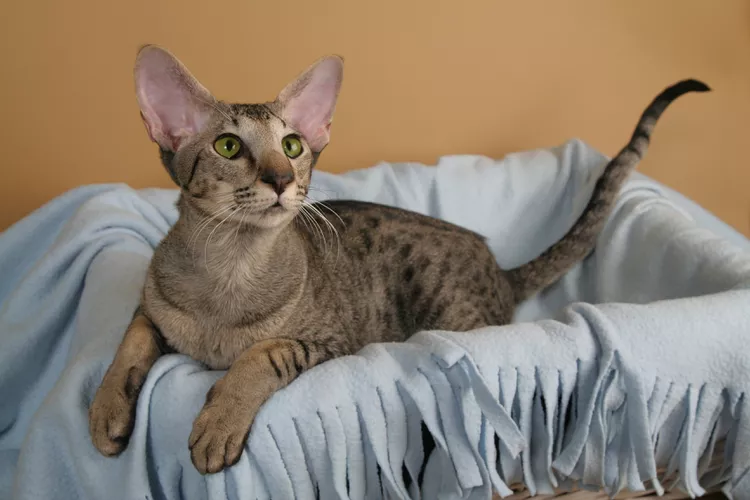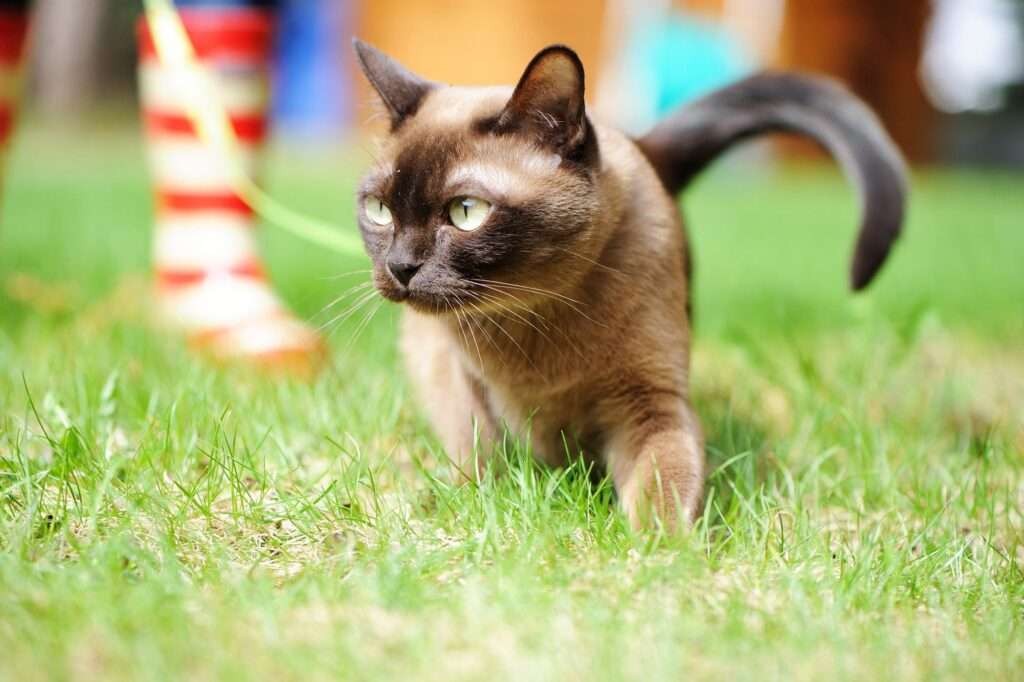
Description
Size: Females weigh between 3 and 4kg and males weigh up to 5kg.
A close-lying, silky, smooth coat highlights the breed’s long legs, wide-set ears, and angular face. The medium-sized oriental shorthair cat has long, slim legs and rather oversized ears, noses, and eyes.
Origin and History
The crossbreeding of numerous other cat breeds produced the oriental shorthair. Many domestic cat breeds were in danger after World War II. English breeders injected Russian blues, Abyssinians, and British shorthairs into their lineages to resuscitate the Siamese.
Breeders soon discovered that the gene pool of these cats had a wide variety of colour combinations, despite the fact that each non-pointed hybrid initially earned a specific breed designation. Orientals became the collective term for all non-pointed kittens to facilitate classification.
The oriental cat was brought to the United States in the 1970s, and the Cat Fanciers’ Association (CFA) granted it championship status in 1977. There was just a short-haired version of the breed at first, but further crossbreeding in the US produced both the oriental shorthair and oriental longhair breed varieties. In 1995, the CFA granted championship status to the oriental longhair.
The breed’s coat colour combinations were further increased by crossbreeding in the United States, giving rise to the over 300 different colors and patterns that exist today. Due to its vibrant coat, the oriental is occasionally referred to as the “rainbow cat”.
Behavior
Activity Level: High to moderate
Social Needs: Oriental shorthairs adore playing and exploring, and they constantly require a friend nearby.
The Oriental Shorthair is an engaging and entertaining pet. This cat is outgoing by nature, but unlike many other breeds, if left alone for longer than a few hours at a period, it may become reclusive and melancholy.
The majority of Orientals like socializing. A cat may occasionally get obsessed on one person while becoming more elusive around others, but this is more of an anomaly than the rule.
As Pet

Grooming
The short, silky coat of the oriental cat requires little maintenance, and this cat is quite good at brushing itself. To get rid of any stray hairs and stimulate the skin, your cat might, however, appreciate a brushing every so often.
The other essential components of keeping any cat well-groomed are routine ear examinations, dental cleanings, and nail trimmings.
Diet and Nutrition
Feeding premium cat food will keep your oriental shorthair healthy. Feed the right amount of food at the right times to prevent overeating and weight gain.
Exercise
Oriental shorthairs enjoy learning new tasks, playing fetch, and walking on a harness because they thrive on interactive stimulus. These felines are regarded as being quite social and enjoy playing with humans, other cats, and even dogs. You should frequently make sure your oriental has a furry friend.
Orientals enjoy leaping and climbing to high vantage places, such as cabinets or refrigerators, to see events below. A tall cat tree with lots of levels for active play can promote safe (and possibly less destructive) climbing.
Table





